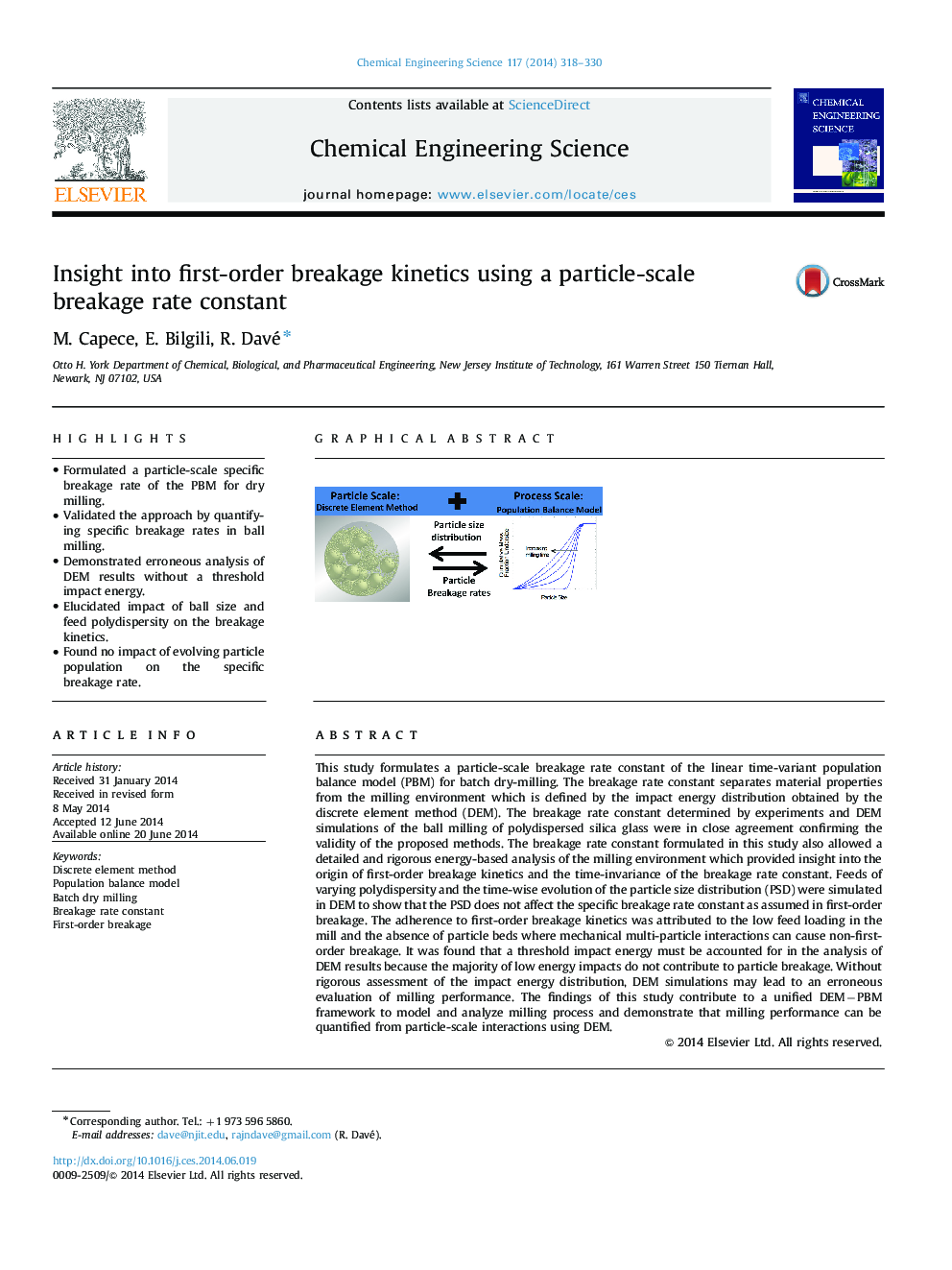| کد مقاله | کد نشریه | سال انتشار | مقاله انگلیسی | نسخه تمام متن |
|---|---|---|---|---|
| 154822 | 456866 | 2014 | 13 صفحه PDF | دانلود رایگان |
• Formulated a particle-scale specific breakage rate of the PBM for dry milling.
• Validated the approach by quantifying specific breakage rates in ball milling.
• Demonstrated erroneous analysis of DEM results without a threshold impact energy.
• Elucidated impact of ball size and feed polydispersity on the breakage kinetics.
• Found no impact of evolving particle population on the specific breakage rate.
This study formulates a particle-scale breakage rate constant of the linear time-variant population balance model (PBM) for batch dry-milling. The breakage rate constant separates material properties from the milling environment which is defined by the impact energy distribution obtained by the discrete element method (DEM). The breakage rate constant determined by experiments and DEM simulations of the ball milling of polydispersed silica glass were in close agreement confirming the validity of the proposed methods. The breakage rate constant formulated in this study also allowed a detailed and rigorous energy-based analysis of the milling environment which provided insight into the origin of first-order breakage kinetics and the time-invariance of the breakage rate constant. Feeds of varying polydispersity and the time-wise evolution of the particle size distribution (PSD) were simulated in DEM to show that the PSD does not affect the specific breakage rate constant as assumed in first-order breakage. The adherence to first-order breakage kinetics was attributed to the low feed loading in the mill and the absence of particle beds where mechanical multi-particle interactions can cause non-first-order breakage. It was found that a threshold impact energy must be accounted for in the analysis of DEM results because the majority of low energy impacts do not contribute to particle breakage. Without rigorous assessment of the impact energy distribution, DEM simulations may lead to an erroneous evaluation of milling performance. The findings of this study contribute to a unified DEM−PBM framework to model and analyze milling process and demonstrate that milling performance can be quantified from particle-scale interactions using DEM.
Figure optionsDownload high-quality image (281 K)Download as PowerPoint slide
Journal: Chemical Engineering Science - Volume 117, 27 September 2014, Pages 318–330
